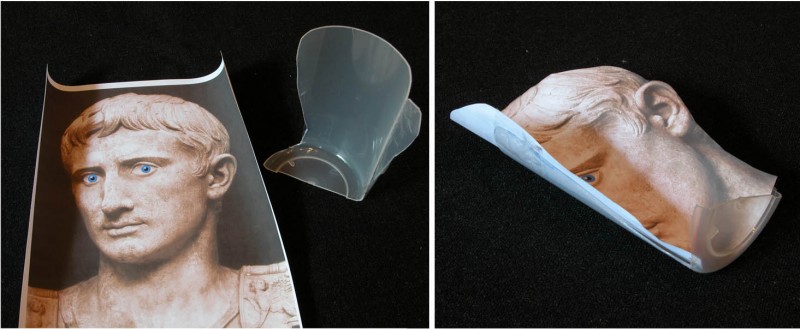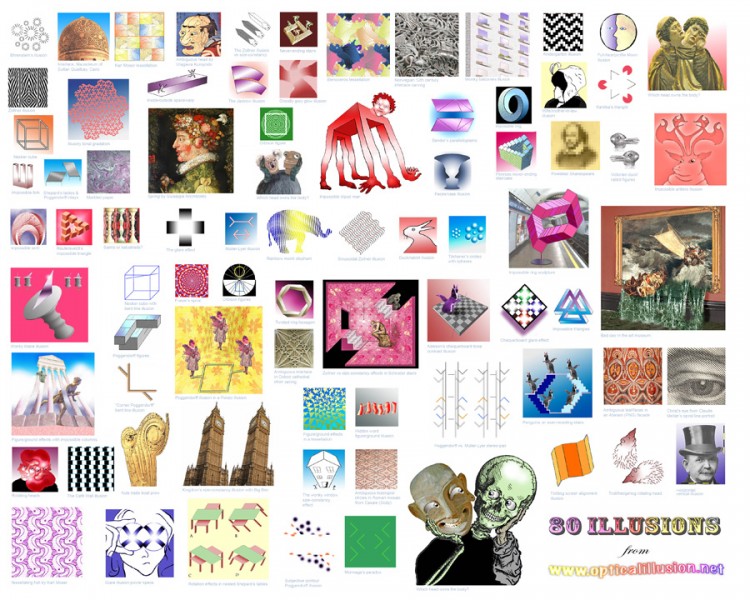I was in a Picasso show recently and noticed the head of a portrait sculpture apparently turning to follow me as I walked past. More on the Picasso later, the movie above is my reconstruction of the effect, using the head of the emperor Augustus (I think). It’s not done by animation. You can set up a static image of your own head at home, and it will apparently turn to follow you as you walk past, not just with the eyes, but with the whole face. Just imagine what a comfort that could be for your partner – to have your head always keeping an eye on things whenever you can’t be home yourself.
All you need is to print out a photo of yourself, between a three quarter and a full face view, and then fasten it into a concave shape. I made my concave shape out of a cheap food container, made of some kind of not too hard polymer, so that I could cut it. As you can see below, I just added a little convex wing at one edge, so that the shape is not all concave, but a bit serpentine. When I fixed the trimmed photo in the shape, that makes the face concave, but the ear convex. I reckon the effect works better overall like that, but you might get better results with a bit of experiment.

The real life version will work best if you view it with only one eye as you pass by, or see it from a distance. That’s because to see the illusion your brain has to overcome the cues telling it the photo is concave, so that you see the face the way the brain insists all faces ought to be, convex. But then the perspective transformation of the image as you move past is all wrong for a convex shape, and the face only makes sense if seen as rotating. The effect is related to the Ames Window, and the hollow face illusion. There’s also a really good YouTube demo using a dragon head. (Actually, I’ve only just discovered that, and it’s better than my demo, but don’t tell anyone).
I think Picasso may have been the first person to discover this effect, in 1954.
Continue reading →



